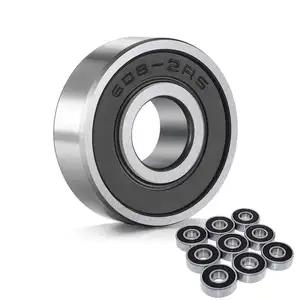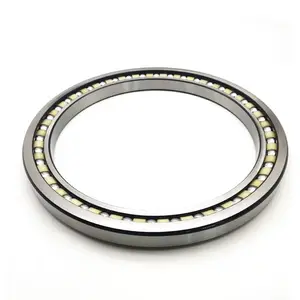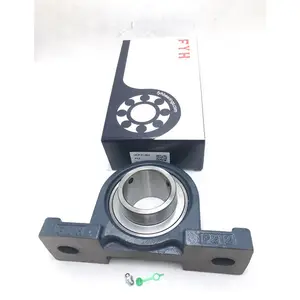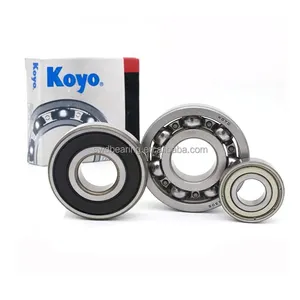Popular in your industry








































































Related Searches:






































































































































Top categories
About electrical cable pulley
An electrical cable pulley is a device commonly used in various industries to guide, redirect, or lift cables with minimal friction. It consists of a wheel on an axle or shaft that is designed to support movement and change of direction of a taut cable or wire rope, as well as to reduce the wear on the cable. Electrical cable pulleys are essential components in the efficient and safe handling of cables in numerous applications.
Types and Characteristics of Electrical Cable Pulleys
Electrical cable pulleys come in various types, each with unique characteristics to suit different applications. For instance, a 98U 100U groove electric wire rope steel cable pulley is designed for heavy-duty applications, capable of handling steel cables with high tensile strength. On the other hand, a Plate Type Electric Cable Pulley is often used for its ease of attachment to various structures and its adaptability to different cable diameters. The Easy Open Pulley For Hanging Electric Cable is another type, favored for its quick-release mechanism, allowing for rapid setup and changes on job sites. Each type is designed with specific cable diameters, load capacities, and environmental conditions in mind, ensuring that there is a pulley system available for virtually any requirement in the field of cable management.
Structure and Operation of Motorized Cable Pulleys
The structure of a motorized cable pulley is more complex than its manual counterparts. It typically comprises a motor unit, a control system, the pulley itself, and various safety features. The motor is responsible for the winding and unwinding of the cable, controlled by an integrated system that can be programmed for precise movement. Safety features may include automatic braking systems to prevent overloading or rapid descent of the cable. This intricate assembly allows for the smooth operation of the pulley, ensuring that cables can be moved with precision and ease, even under substantial loads.
Materials and Properties in Electrical Wire Pulleys
The materials used in electrical wire pulleys are selected based on their properties and the demands of the environment in which they will be used. Alloy pulleys are prized for their combination of lightweight and high strength, making them suitable for mobile applications. Stainless steel is chosen for environments where corrosion resistance is paramount, ensuring longevity and reliability. Cast iron is often used in cost-sensitive applications where durability is still a requirement. Aluminum alloy offers a lightweight yet strong alternative, and wood is used in situations where electrical insulation is necessary. Each material brings benefits such as durability, strength, corrosion resistance, or electrical insulation, making the choice of material a critical decision in the design of a pulley system.
Business Usages and Applications of Electrical Cable Pulleys
In the realm of business, electrical cable pulleys are indispensable in settings such as manufacturing plants, where they facilitate the movement of electrical cables alongside machinery. In construction, they are used to hoist electrical wiring through the frameworks of buildings. These pulleys not only streamline the process of cable management but also enhance safety by reducing the likelihood of cable damage, which can lead to costly downtime. The use of pulleys in building material shops allows for the efficient organization and distribution of cables to customers, illustrating the pulley's role in both operational and customer service capacities.
Functions and Tasks of Electrical Cable Pulleys
The primary function of an electrical cable pulley is to guide and support cables, ensuring they can be moved or secured with minimal risk of tangling or wear. They are designed to perform tasks such as lifting cables to significant heights, redirecting them around obstacles, and managing the tension in the lines to prevent sagging or snapping. This functionality is critical in applications ranging from theatrical rigging, where cables must be precisely positioned, to utility work, where cables must be safely and efficiently installed and maintained.
Features and Unique Selling Points of Greenlee Wire Pulling Sheaves
Greenlee wire pulling sheaves stand out in the market for their robust construction and user-friendly design. Features such as their high load capacity, resistance to wear, and compatibility with a wide range of cable sizes make them a preferred choice. Their unique selling points include the ability to withstand the rigorous demands of continuous operation and their adaptability to various industrial settings, which sets them apart from competitors.
Benefits and Positive Outcomes of Using Electrical Cable Pulleys
The use of electrical cable pulleys brings numerous benefits, such as improved safety on job sites, increased efficiency in cable handling, and reduced physical strain on workers. These positive outcomes lead to a more streamlined workflow, fewer workplace injuries, and a lower risk of costly cable damage. The reliability and efficiency of pulleys translate into direct business value by minimizing downtime and maintenance costs.
How to Use, Choose, Clean, Maintain, and Install Electrical Cable Pulleys
Effective operation of an electrical cable pulley system requires understanding its components and functions. When selecting a pulley, it is crucial to consider the cable diameter, the weight of the load, and the environmental conditions. For cleaning and maintenance, regular inspections should be conducted to check for signs of wear or damage, and appropriate lubrication should be applied to moving parts. Installation should follow the manufacturer's guidelines, ensuring that the pulley is securely attached and aligned to prevent cable slippage or misrouting.
Target Audience and Meeting Needs with Electrical Cable Pulleys
The target audience for different types of electrical cable pulleys includes electricians, rigging professionals, construction workers, and maintenance personnel. Each product is designed with the needs and preferences of these professionals in mind, offering solutions that enhance safety, efficiency, and reliability in their respective tasks. By understanding the specific requirements of these users, manufacturers can tailor their pulley systems to meet the exacting demands of the industry, ensuring that each pulley serves its intended purpose effectively.
How can electrical cable pulleys improve efficiency in industrial settings?
Electrical cable pulleys can significantly improve efficiency in industrial settings by facilitating the smooth and controlled movement of cables, thus reducing manual labor and the risk of cable damage. Their ability to redirect and support cables allows for more organized and streamlined cable management, which is essential in complex machinery and large-scale industrial operations.
What customization options are available for businesses requiring specific pulley solutions?
Businesses can benefit from a range of customization options, including OEM, ODM, and OBM services. These services allow businesses to specify the exact dimensions, materials, and features they need for their electrical cable pulley systems, ensuring that the final product is perfectly suited to their unique operational requirements.
Are there specific maintenance protocols to follow for different materials of cable pulleys?
Yes, different materials used in cable pulleys may require specific maintenance protocols. For example, stainless steel pulleys may need regular cleaning to maintain their corrosion resistance, while cast iron pulleys might require more frequent lubrication to prevent rust. It is important to follow the manufacturer's recommendations for maintenance to ensure the longevity and reliability of the pulleys.


























